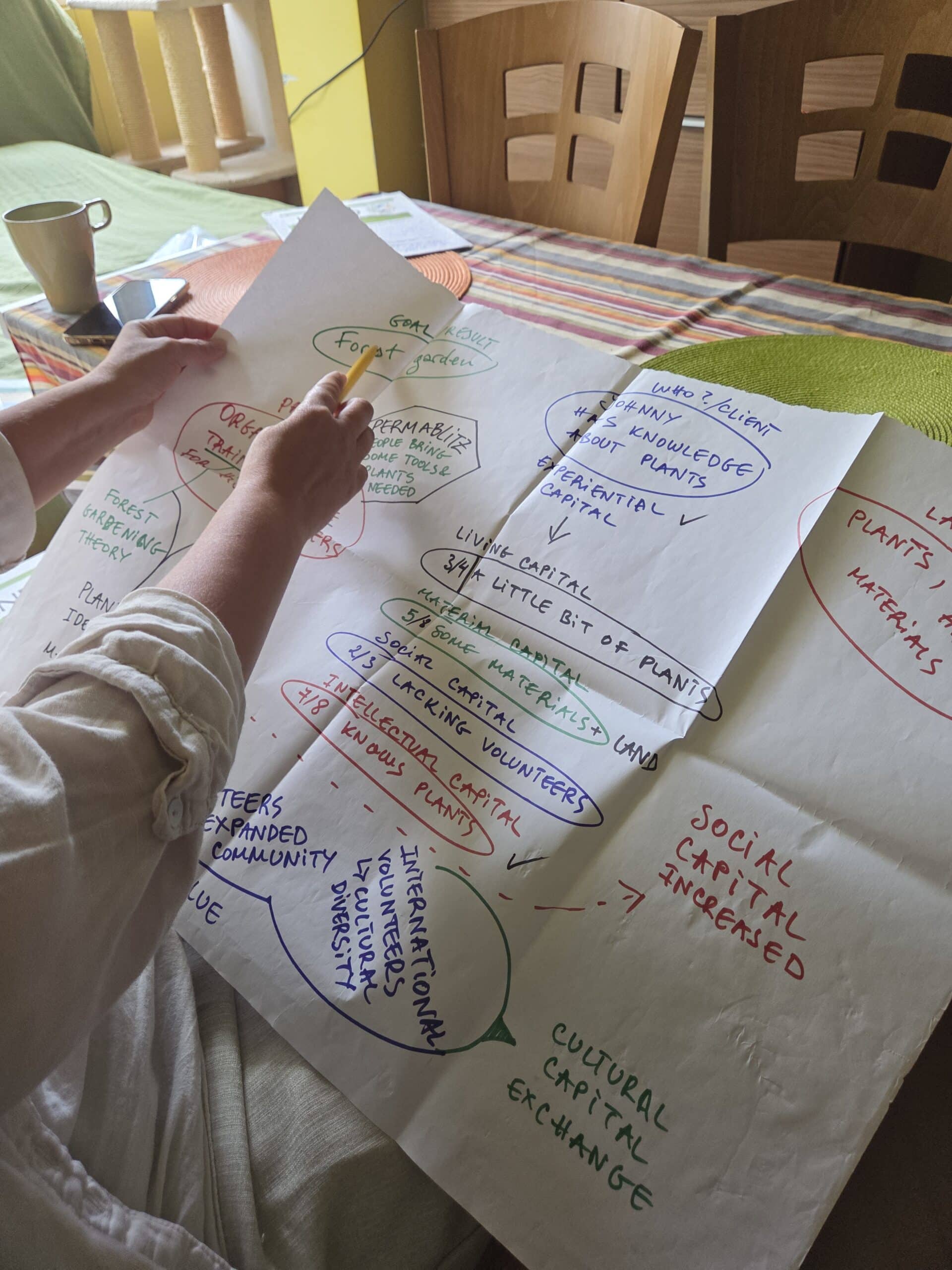After a bit of a break from the project, I got the chance to jump back in with a really insightful exercise, thanks to Misha. She introduced me to a tool she learned during a LAND project workshop last year – it’s all about looking at alternative forms of capital and how they can help support LAND site candidates who might not have a lot of financial resources but still bring a lot to the table.
We worked through the exercise from the perspective of a hypothetical LAND candidate and tried to solve the case using these alternative capitals as a guiding principle. The process was surprisingly eye-opening and structured around a few clear steps, which we mapped out together (with a nod to the original poster graphic for guidance).
Here’s a rough breakdown of what we explored:
Setting a goal: What does the candidate want to achieve with the LAND site? This helps ground the whole exercise.
Identifying the “clients”: Who benefits or is involved in the project? It could be local communities, learners, networks, or even nature itself.
Spotting gaps: We looked at what’s currently lacking – be it financial, organizational, or otherwise.
Mapping existing capital: Here’s where the magic happens. We listed different types of capital already present on the site:
Living capital (like soil, plants, water)
Material capital (tools, buildings, tech)
Social capital (connections, community support)
Intellectual capital (skills, knowledge, ideas)
Exploring exchange: Finally, we brainstormed ways the candidate could “give back” to participants or supporters. Instead of paying in money, maybe it’s offering a workshop, hands-on learning, or shared experiences.
What stood out most was how empowering it felt to reframe the conversation around what is available, instead of only what’s missing. It helped shift the focus from financial limitations to potential resources and creativity.
Big thanks to Misha for walking me through this. It was a perfect re-entry into the project and reminded me why these kinds of frameworks are so valuable – they don’t just help with planning, they invite a new way of thinking. 




